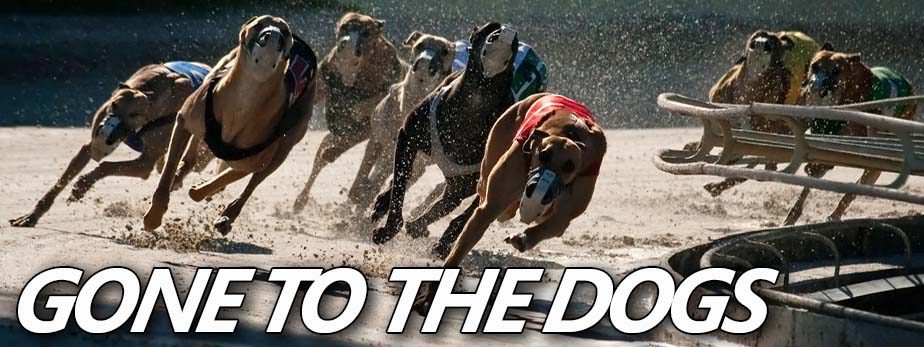Gone to The Dogs - Greyhound Racing Tricks And Scams
A Bit of Background Info
The very first official greyhound race took place at the Belle Vue Stadium in Manchester in 1926 and was attended by around 1700 spectators; such was its popularity that two other venues were opened in the same year. Just 20 years later there were over one hundred licensed tracks in the UK, 25 in and around London alone, which entertained an estimated 36 million spectators. As well as those, there were 250 unlicensed racing arenas in existence; these are colloquially known as ‘flapping tracks’.
In its heyday, greyhound racing was the second most-watched sport, following closely behind football and with more followers than horse racing. Sadly, it has become a minority sport in more modern times, with less than 2 million spectators and the majority of the tracks now closed or repurposed, leaving just 18 licensed tracks and five flapping tracks in the whole of the UK.
Greyhound racing has often been a subject of controversy for many reasons, including the welfare of the racing dogs themselves. Also, as with many other sports, there is always an element of human greed in the background and there have been many scams over the years to prove it. Most would no longer be possible to pull off, but we found these older ones the most entertaining.
1950s: Just a Stray Black Dog
Disrupting races was prevalent at many tracks during the 50s, with missiles often thrown in front of, or even at, the racing dogs. The objects used varied from rocks to distracting pieces of food or even live rabbits. Often, this type of interference ended with the race being declared void and the main culprits behind it were often unscrupulous bookmakers who were looking at substantial losses if the race progressed.
However, one of the most engaging stories of race interference took place at the now-defunct Nottingham Stadium when an additional greyhound joined a race, allegedly having been dropped onto the track from a wall adjacent to the back straight. Stewards automatically declared the race void and the ‘owner’ of said dog was asked to collect it and to report to the office.
Not surprisingly, nobody claimed the dog, who was taken home by one of the trainers attending the meeting. The trainer aptly named the male dog ‘ Rare Gift’ and after retraining him, had several racing successes at the same track.
1960s: The Dagenham Coup
Also known as ‘Operation Sandpaper’ this was one of the biggest bookie scams ever reported and involved multiple people in pulling it off. The main perpetrators were a punter named John Turner who was aided and abetted by a bookmaker called Leslie Carey, owner of twenty betting shops. Turner was the brains behind the scam and Carey allegedly funded it.
Between them, they recruited a total of 170 ‘helpers’ split into three groups, each with different remits. The race in question was the 4.05 pm on 30 June 1964 at the Dagenham Greyhound Stadium. This particular race was selected because two dogs were running that both Turner and Carey agreed had ‘no chance’ of a win.
In 1964, off-course betting rules meant that the odds set at the track were applied, so the group one helpers were tasked with simultaneously placing bets at multiple betting shops shortly before the start of the race. These bets were placed in such a way that they used combinations of the other four dogs in the race. Meanwhile, group two were busy ensuring that all phone lines into the stadium were in use, thus preventing the odds changing.
Group three was at the track itself, busily placing over 11,000 bets on the remaining two dogs, effectively monopolising all of the Tote windows and increasing the odds further for the bets placed by group one to a colossal 9217/1. Despite losing the Tote bets and paying 170 helpers for their services, Turner and Carey still netted £600,000 (worth around £12 million today).
Despite a two-year court case, Turner’s scam was described as “brilliantly successful” by the judge and the only casualty was Dagenham Stadium which went bankrupt and closed shortly after.
1970s: A Lack of Technology
Due to the complete absence of technology during the 1970s, a small gang succeeded in operating a minor scam repeatedly at the Watford Greyhound Stadium. It was a very a low-tech operation, involving just a ladder, a lookout and a runner.
The little system the crooks had going for several years was made easy for them by two factors: the relatively low boundary wall at one end of the stadium and the time delay for the track commentary to reach the local branch of a well-known betting shop.
A ladder against the said wall gave the lookout a clear view of the track and the race in progress. As the dogs reached the third bend, the watcher would signal to the runner the number of the leading dog, who promptly nipped into the bookmaker’s shop and placed a bet on it.
Because it was all kept very low-key, the scam was never discovered, but naturally came to an end with the advent of newer technology, meaning no more time-lapse available to win some beer money.
2000s: The War Against Drugs
Everyone likes to beat the bookies, but even as avid gamblers, I would like to think that few of you reading this would condone cheating at the cost of harming animals. However, not everyone thinks that way and there has definitely been an increase in drug-related scams at every greyhound racing track across the world.
Substances used to either speed up or slow down racing greyhounds include cannabis, cocaine, Viagra, Ritalin and Cyclizine. Legal or otherwise, these are all very harmful to dogs, yet are ‘routinely’ used by unscrupulous trainers. It does not help the cause when those in authority decide to collude with cheats either.
Rodney Potter, was formerly the Chief Steward of one of Australia’s biggest authorities, Greyhound Racing New South Wales (GRNSW), with responsibility for forty tracks across the state. In 2000 he was prosecuted for “corrupt conduct” which involved five major greyhound trainers as well.
Potter was found guilty of falsifying drug test results by tampering with, switching or destroying urine samples destined for the laboratory and received a two year jail sentence. Every sample he doctored over a four year period was worth a minimum of $200 and up to $10,000. However, the estimated $100,000 he gained in bribes all went to pay off his tax and child support arrears, so ultimately he lost everything and was last seen mowing lawns for a living.
2020: The Future of Racing
For the UK at least, the remaining dog tracks seem to be well-managed and thriving. Some are owned by major bookmaking chains and others have diversified into other businesses in order to keep greyhound racing alive.
Recently, greyhound racing does appear to have found more favour with the online betting community and we are again seeing races run at our stadiums, albeit behind closed doors.
Going to the dogs makes for a cheap family outing, where both kids and adults are entertained. We sincerely hope that this traditional sport will survive for many years to come.

Tracy started writing for us in early 2017 and is a crucial player within our team. She’s the editor of our Blog and regularly writes other articles. Tracy’s online gambling insights are born out of years of real-world experience as a Croupier overseeing table games.

 Blog Home
Blog Home
 Privacy Policy
Privacy Policy
 About Us
About Us








